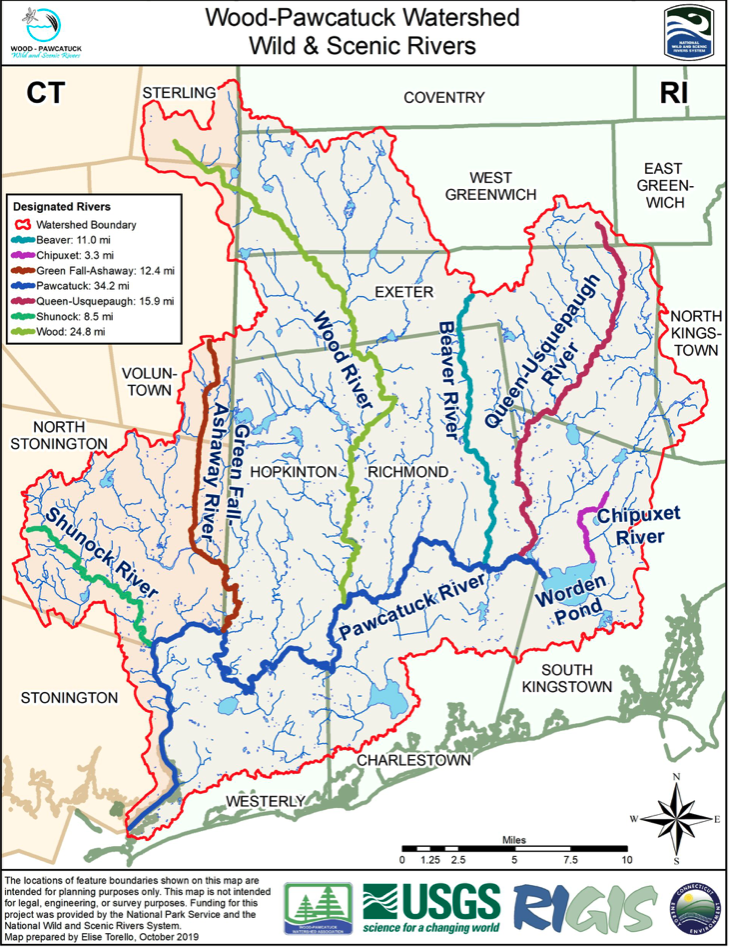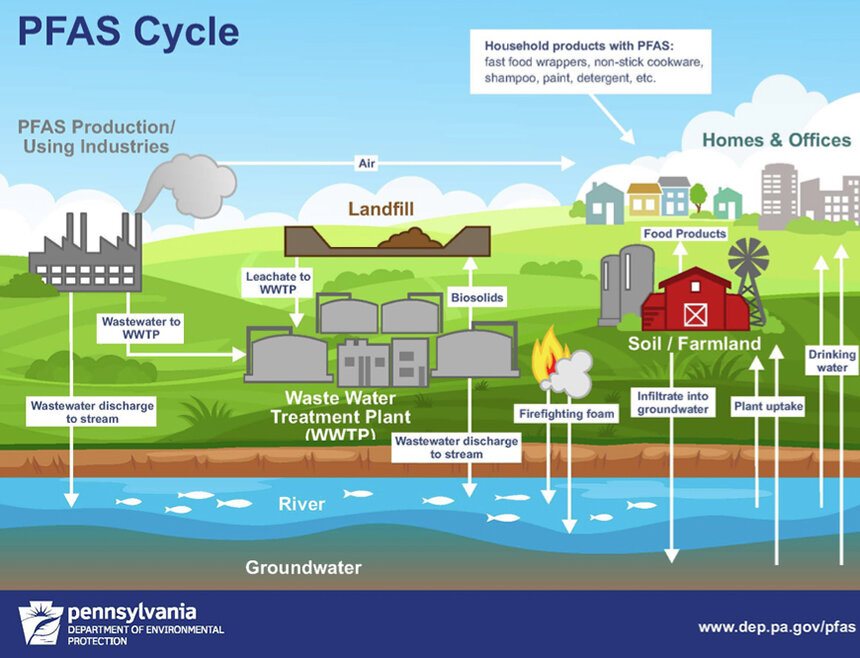New Flood Mitigation Project for Wood-Pawcatuck Watershed
February 2, 2023
HOPE VALLEY, R.I. — Flood mitigation is once again on the government radar with a new study of the Wood-Pawcatuck watershed.
An overview of the “Wood-Pawcatuck Rivers Flood Protection Project,” administered by the Natural Resources Conservation Service (NRCS) of the U.S. Department of Agriculture (USDA), was unveiled to residents of the communities in the watershed and state representatives last month.
The examination follows an earlier study of the watershed, conducted in 2017 by the engineering firm Fuss & O’Neil and funded by $720,000 from the Hurricane Sandy Coastal Resiliency Competitive Grant Program.
NRCS representatives did not say how much the new flood mitigation project will cost.
“You’ve already completed an initial study that was published in 2017,” consulting engineer J. Matthew Bellisle said. “We’re going to be building on that.”
Bellisle’s firm, the Pare Corporation of Lincoln, has been hired by the NRCS to do the new study.
“The NRCS was brought into this because a number of local groups approached us and said, ‘We have some flooding problems. We would like to study these, but we want some assistance,’” he said.
Spanning southern Rhode Island and eastern Connecticut, the Wood-Pawcatuck watershed is extensive, comprising 300 square miles and touching 14 communities. In addition to the Wood and Pawcatuck rivers, the watershed includes 14 tributaries and, in 2019, received a National Wild and Scenic River designation from the National Park Service.
Gina Fuller, district manager of the Southern Rhode Island Conservation District, began reaching out to the towns and the Indigenous tribes in the watershed. To date, in Rhode Island, Westerly, Richmond, Charlestown, South Kingstown, and Hopkinton have joined the program as sponsors, and Stonington, North Stonington, and Voluntown in Connecticut have joined.
“For us, as consultants and modelers, that is tremendous,” Bellisle said. “Because of the size of this watershed … having this amount of involvement makes it so that we can look at the whole watershed from a solutions standpoint, because it probably isn’t going to be one smoking gun or one solution. We need to look at it in its entirety and look at where we can make incremental changes in some cases, or maybe larger changes, so we can improve conditions throughout the watershed.”
Project lead Darrell Moore, the state conservation engineer with the USDA, said the goal of the project is to work with communities to find solutions to local flooding problems.
“This is us partnering with the communities to have a successful project that we can all benefit from,” he said. “The federal government does have its desires of what we want to accomplish; however, what you as residents, as well as sponsors of the project, what you want is equally as important.”
Moore made a point of assuring the towns that there was no hidden agenda that would involve dam removal. Westerly and Hopkinton residents have strongly opposed the proposed removal of the Potter Hill dam, because they fear that restoring the natural flow of the river would adversely impact their wells and riverfront properties.
“We’re looking at this holistically,” Moore said. “We’re looking at this as how we can work with the entire watershed to benefit everybody.”

Towns that have signed on as sponsors are responsible for obtaining the necessary permits, and working with property owners on easements, which the federal government would pay for. The towns would also be required to take care of the long-term operation and maintenance of whatever measures are put in place.
“If we make a change anywhere, we’re not looking at the change just for that year,” Moore said. “We’re looking at this as a long-term commitment that we’re putting funding into, so, with many things such as levees or dams — and I’m not saying that’s what we’re doing here — they require a certain level of maintenance and it’s the sponsors’ responsibility to make sure they’re taken care of.”
As the lead agency, the NRCS will provide the engineers and additional technical expertise to evaluate and implement flood mitigation measures.
Several Rhode Island and Connecticut communities suffered extensive damage from the historic flood of 2010 and Superstorm Sandy. Westerly town planner Nancy Letendre asked whether the models would account for cumulative effects such as those that contributed to the March 2010 floods.
“I think the issue with the 2010 flood was there was a cumulative effect,” she said. “Is there any room in the assessment? Did you discuss the cumulative effect, or will you simply have enough data, so that if the question comes up, you can answer?”
“We’re not going to reproduce the 2010 event, but one of these events is going to be close to the reality that was the 2010 event,” Bellisle said.
The NRCS team will be evaluating a broad range of flood mitigation measures, from doing nothing to building dams. Moving structures out of flood zones, elevating buildings, improving drainage, widening stream channels, and raising bridges will also be considered.
“I’m not saying which one of those or how many of those we’re going to apply,” Bellisle said. “We’re going to be looking at all of those as scenarios, and we’re also going to get creative and see if we can come up with some new idea that might help as well.”
The team is close to completing the data collection and will soon begin analyzing the alternatives using Dunn’s model.
“That’s what most of our time is going to be spent on, evaluating those alternatives,” Bellisle said.




One way to mitigate flooding is protecting the few old growth forest pockets along the Pawcatuck River as well as leaving mature forests along the river alone so they can become old growth. Old Growth trees can absorb a large quantity of water, far more than a second growth tree. I hope NRCS’s plan to mitigate flooding doesn’t include logging since that would be nonsensical and make the situation worse. Also, environmental groups need to stop clearcutting near the Pawcatuck River. Clearcutting removes much of the natural barriers “forests” that mitigates flooding.
Building dams??? Hope that was a mis-print. Should concentrate on removing dams and restoring flood-plains.